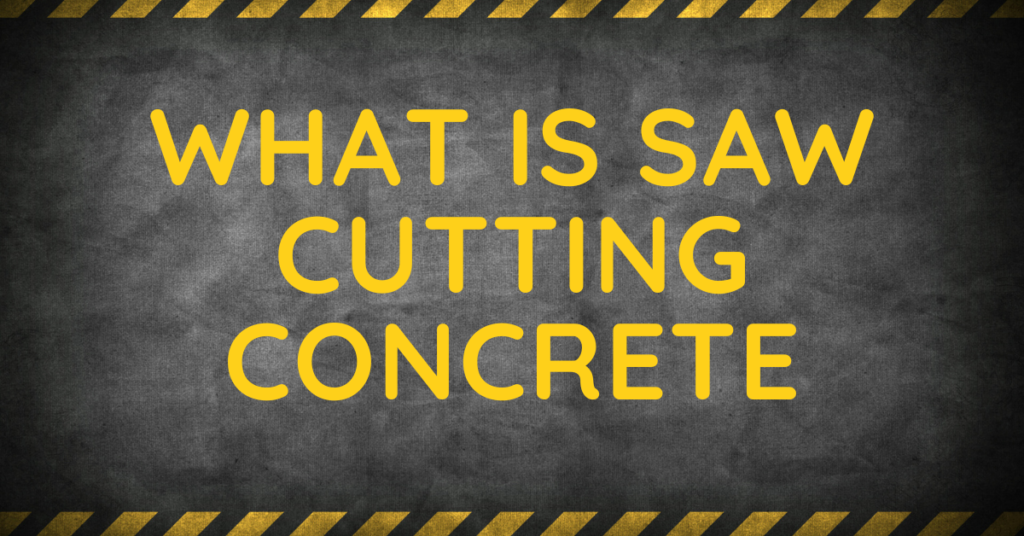The concept of saw cutting through concrete is a process for creating control joints in concrete. In the process of saw cutting, concrete control joints are joined in a manner that can prevent cracks due to shrinkage. Saw cutting prevents internal cracking. These cuts are made at spaces right before the concrete gains strength. Thus, it is essential for construction workers to perform timely cuts. The cracks in the concrete are caused due to some factors such as mix design, concrete admixtures, and air temperature.
Check Out: Core Cutting in Abu Dhabi
What Is The Right Time For Saw-Cutting Concrete?
The weather and the concrete mix play a vital role in shaping the hardness of the concrete. Further, this equipment determines the hardness of the concrete and the user of saw cuts. There is a point that needs to be considered that early cutting might cause raveling. Raveling is a concept in which there is an effect which is created by the saw blade.
According to the construction industry rules, the construction workers can start saw cutting anywhere between three to six hours right after the concrete is poured. But the weather conditions need to be considered first. Now is the point where the construction workers need to consider the conditions appearing for the raveling. The complete concept of raveling is explained in the next paragraph.
If there are no concerns for the raveling then the trail cuts can be started. There are some contractors that avoid starting saw cutting because later they need to cope with the issues of raveling.
Here are some factors that the construction workers prefer not to do on any of the projects concerning saw-cutting on concrete.
- Do not push the blade hard.
- Do not perform saw cutting at high speed
- Prefer a saw with a bent spindle
- Try avoiding inappropriate saw blade
Where To Start Your Saw-Cutting On Concrete
Now coming to the point of starting your saw-cutting on concrete. There is an important consideration that needs to be kept in mind right before starting the process. This consideration includes selecting the points of cuts. According to the construction industry norms, it is recommended that you need to start with the center of column lines.
The joints must have a space of 24 to 30 times the thickness of the slab. On the contrary, the structural engineer needs to confirm this measurement for smooth operations and structural integrity. To maintain the integrity of the structure, we have elaborated on some factors.
- Start with square patterns.
- Offer continuous saw-cuts
- Select the area that does not have steel reinforcement
- It is recommended to make smaller cracks
- Avoid maintaining several joints
How To Perform Saw-Cutting On Concrete
There are three factors that play a vital role in performing saw-cutting on concrete. These factors include base type, slab thickness, and the curing technique. After considering these factors, you need to analyze the joints before cutting concrete. Right before performing the cuts, construction workers must maker the joints they need to cut using a lead pencil or with chalk. Moreover, if the workers are using wet cutting blades, make sure that the water is poured regularly on the surface of the slab.
Now the construction worker lets the blade reach the depth required for the project and drags the saw cutter on the marking made with the chalk.
- Try avoiding twisting the saw blade
- Never let the blade spin in the cut
- Always consider the wear on the bond
- While operating a heavy rebar, try using blades with soft metal segment bonds
- Do not forget to use PPE
How Deep Saw Cuts Must Be Made
Now let us talk about the deepness of the saw cuts. According to professionals working in the construction industry, it is the norm among professionals that the cut must be made equal to the thickness of the joint. The measurement of the cut varies anywhere from one-quarter to one-third.
If you are working on a 6-inch-thick slab, the cutting of the slab must be 1 1/2 to 2 inches deep. This will ensure that the saw cutting has met the industrial norms and structural specifications. Moreover, if you intend to go more deep into the concrete, there is a concept of interlocking that needs to be taken into consideration that at that particular thickness, the transfer load will not be sufficient. And as a result, the cracking might start appearing on the surface of the concrete.
